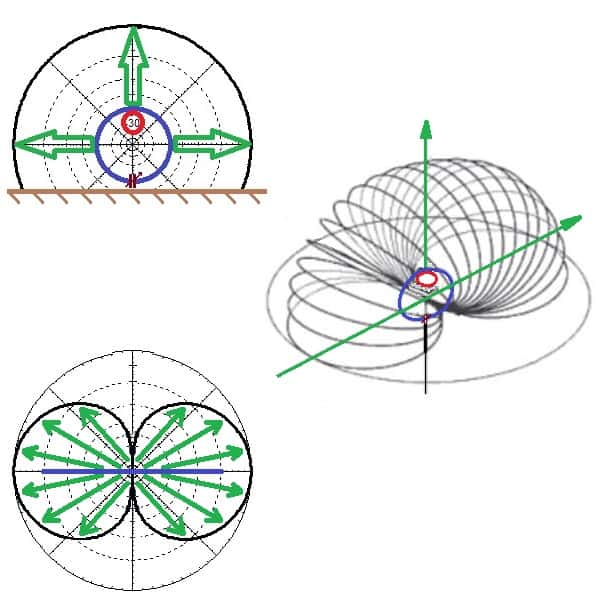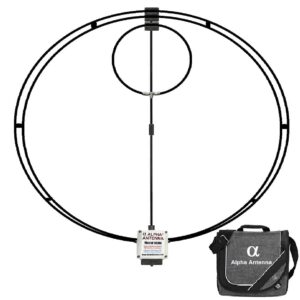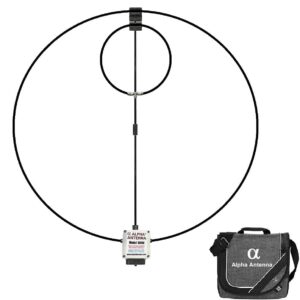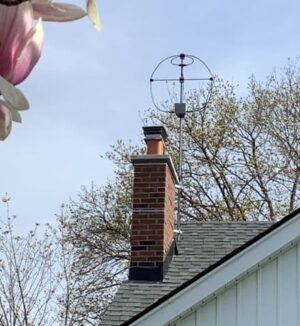MagLoop Far Field Signal Pattern of the Alpha Magnetic Loop Antenna

Advantages of a MagLoop
The signal pattern of a MagLoop (Magnetic Loop) antenna provides operators with significant advantages. These advantages include signal patterns that are useful for minimizing or even eliminating near field noises. So, it is hard to beat a MagLoop antenna when lowering a noise floor.
Using the MagLoop
Far Field Patterns in the image show a MagLoop antenna with the small Feed Loop represented in Red. This loop couples with the BLUE outer loop to form the inductive characteristics of the MagLoop antenna. As a result, turning the variable air capacitor shown in Maroon tunes the loop.
Directionality of the MagLoop
The signal pattern of a loop include; Ground-Wave, NVIS (Near Vertical Incident Skywave), and DX (Long Range). A MagLoop antenna has a signal pattern that looks like a giant and ever-expanding donut. This is similar to the shape as the ionosphere for propagating DX. NVIS uses a take-off pattern above the antenna. DX uses a low take-off angle towards the horizon for greater distances. As a result, a MagLoop provides all of the signal patterns that are used.
Verdict for MagLoop antennas
As a stand-alone solution, the 1-meter-wide MagLoop from Alpha Antenna offers coverage of UHF, VHF, 6M, and 10-80 meters. Resonant antennas must be placed very high to maintain their efficiency and directional characteristics. A loop only needs to be placed 2 loop diameters high. Higher makes the ant omnidirectional defeating the goal of directivity. So, it is hard to beat a MagLoop’s efficiency and signal pattern. As a result, ease of use for such a wide selection of frequencies from one antenna makes the Alpha Loop antenna a near perfect solution for all amateur ham radio operators.
-
Sale Product on sale10-80M 100W* MagLoop (**6M/VHF/UHF)
$600.00Original price was: $600.00.$550.00Current price is: $550.00.Rated 5.00 out of 5 based on 85 customer ratings -
Sale Product on sale10-40M 100W MagLoop (*6M/VHF/UHF)
$550.00Original price was: $550.00.$500.00Current price is: $500.00.Rated 5.00 out of 5 based on 79 customer ratings -
10-40M 100 Watt MagLoop + Remote$999.00Rated 5.00 out of 5 based on 5 customer ratings



